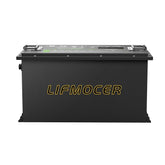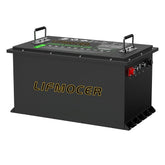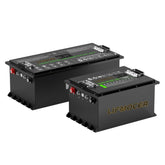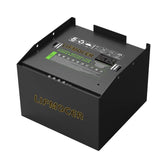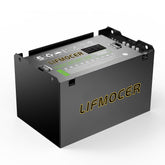How to Jump Start a Car Safely and Effectively
Overview
A dead battery is the most common reason a car won't start. Having a car that won't start can be frustrating and inconvenient, especially if you're in a hurry or stranded in an unfamiliar place. Knowing how to use a jump starter can save you time and money. Whether you use traditional jumper cables or a modern portable car jump starter, we hope this comprehensive guide has taught you how to jump start your car properly.
Why Cars Fail to Start
Dead batteries account for millions of breakdowns each year. According to the American Automobile Association (AAA), battery issues are the leading cause of roadside assistance requests. Car batteries lose power naturally over time, but extreme weather—both hot and cold - can accelerate the process. Leaving lights or electronics on while the engine is off also drains power quickly. In some cases, A dead battery is not the only reason a car won’t start but also the alternator, which is responsible for charging it while the engine runs.
Common issues include:
- Starter motor failure - If the starter wears out, the engine will not crank even with a fully charged battery.
- Faulty ignition switch - A worn or damaged ignition switch can interrupt the electrical connection needed to start the car.
- Fuel delivery problems - A clogged fuel filter or failed fuel pump can prevent fuel from reaching the engine.
- Spark plug or ignition coil issues - Without proper ignition, the engine cannot fire up even with sufficient fuel and power.
By understanding these different causes, drivers can better determine whether the solution is as simple as a jump start or if professional jump start car service and repair are needed.

Tools You Can Use
There are two main tools you can use to bring your car back to life. The first is the classic jumper cable method, which requires another running vehicle. This is the traditional approach and remains widely used today. The second is using lithium battery jump starters, also known as car battery jump starters. These are standalone devices, often compact enough to fit in your glovebox, yet powerful enough to deliver the necessary current. Modern devices such as a 1000 amp jump starter are capable of starting most passenger vehicles, SUVs, and even light trucks without external help. Many drivers now prefer carrying one of these because it ensures independence, especially in remote areas where another vehicle may not be available.
Car Battery Charger Jump Starter vs. Jumper Cables
| Feature | Jumper Cables | Car Battery Charger Jump Starter |
|---|---|---|
| Requires another vehicle | Yes | No |
| Ease of use | Medium | Easy |
| Safety | Risk of sparks & misconnection | Built-in protections |
| Portability | Small but limited | Compact with multiple functions |
| Best for | Situations with another car nearby | Solo drivers, emergencies, long trips |
Step-by-Step: How to Jump Start a Car with Cables
If you want to know how to start a car with jumper cables, it’s important to follow a systematic process to avoid accidents or damaging your vehicle’s electrical system. Here’s a detailed breakdown:
- Position the vehicles: Park the working car close to the disabled car, ensuring they don’t touch. Both vehicles should be in Park (automatic) or Neutral (manual) with the parking brakes engaged.
- Turn everything off: Switch off both ignitions and all accessories such as headlights, radio, and AC to prevent surges.
- Connect the red clamps: Clip one red clamp to the positive (+) terminal of the dead battery, then the other red clamp to the positive terminal of the power-supply vehicle.
- Connect the black clamps: Clip the black clip to the negative terminal of the powered vehicle (marked with "-" or a black mark), and clip the other end of the black clip to the metal parts of the engine of the low-power vehicle (such as bolts, metal brackets). Do not directly connect to the negative terminal of the low-power vehicle to prevent sparks from causing an explosion.
- Start the power supply vehicle: Start the engine of the power supply vehicle and keep it idling for 5-10 minutes to charge the low-power vehicle.
- Start the dead battery vehicle: Try to start the engine of the depleted vehicle. If it fails to start, check that the cable connections are secure, or wait for the powered vehicle to continue charging for 1-2 minutes.
- Remove the cables carefully: Once the dead car starts, disconnect the clamps in reverse order. Drive the vehicle for at least 15–20 minutes to recharge the battery fully.
This process demonstrates not only how to jump start a car properly but also why patience and precision are critical for safety.

How to Use a Portable Jump Starter
While jumper cables are reliable, they require another car. A portable jump starter offers a more convenient solution. These devices are essentially compact batteries designed to deliver high current on demand. To use one, simply attach the clamps to the dead battery terminals following the same positive-to-positive, negative-to-ground procedure, press the power button, and attempt to start your vehicle. Many modern models are spark-proof and feature reverse polarity protection, meaning they won’t operate if you connect them incorrectly. This makes them especially useful for people with little mechanical experience.
Some top-rated car jump starters double as power banks, allowing you to charge phones, tablets, and laptops in emergencies. Others include built-in flashlights or even tire inflators. Reports from Autoguide suggest that models with at least 1000 peak amps are strong enough for most daily drivers, while heavy-duty vehicles may require even higher outputs.

Safety Tips for Jump Starting a Car
Avoid Sparks or Short Circuits
When jump starting a car, it is crucial to prevent sparks near the battery, as car batteries contain flammable hydrogen gas. Always connect the positive and negative clamps carefully, and double-check the sequence before powering on the device. Even a small spark can potentially cause injury or damage to the battery.
Check Gear and Parking Brake
Ensure both vehicles are in Park (for automatic) or Neutral (for manual transmission) with the parking brake engaged. This prevents accidental vehicle movement during the jump start process, which is a common cause of accidents when using jumper cables or portable jump starters.
Avoid Contact with Battery Acid
Car batteries can leak acid, which is highly corrosive. Wear protective gloves and eyewear to prevent burns or injuries, and never touch the terminals with bare hands. If any acid comes into contact with skin or clothing, rinse immediately with plenty of water.
Prevent Incorrect Connections
Connecting the clamps to the wrong battery terminals can damage the vehicle's electrical system and potentially the jump starter itself. Always connect red to positive (+) and black to negative (−), and when using jumper cables, connect the last negative clamp to an unpainted metal surface on the engine block rather than directly to the dead battery.
Choosing the Best Car Jump Starter
There are countless options on the market, making it challenging to decide on the best car jump starter for your needs. When comparing the best jump starter packs, you should pay close attention to several factors:
- Power rating: A 1000 amp jump starter is typically enough for cars and midsize SUVs. Larger vehicles may need above 3000 amps.For Example : LIFMOCER GS300 3000A jump starter.
- Safety features: Look for built-in protections against sparks, overcharging, and incorrect connections. These features are not only safer but also extend the life of the device.
- Portability and design: Compact, lightweight designs are easier to store in your trunk or glovebox, ensuring you always have them handy in emergencies.
- Extra features: USB charging ports, air compressors, and LED flashlights add significant value, especially if you travel frequently.
Investing in one of the top-rated car jump starters is not just about convenience—it’s about peace of mind. Knowing you have the ability to get your vehicle running again without relying on strangers makes driving safer and more enjoyable.
When to Call a Jump Start Car Service
Even if you know how to jump start a car properly, there are situations where professional help is the best option. If your vehicle still won’t start after following the correct procedure, or if your lithium battery battery keeps dying shortly after being charged, the underlying issue may be more complex. It could involve your alternator, starter motor, or even a deeper electrical fault. In such cases, it’s wise to contact a professional jump start car service or roadside assistance provider. According to the National Highway Traffic Safety Administration (NHTSA), electrical issues left unchecked can compromise both safety and vehicle performance.
Final Thoughts
Learning how to jump start a car is an essential skill for drivers of all experience levels. Whether you rely on traditional jumper cables or modern portable jump starters, being prepared ensures you won’t be stranded when your car won’t start. For those seeking greater independence and reliability, investing in one of the best jump starter packs - such as a 1000 amp jump starter - is a smart choice. With proper knowledge, the right tools, and awareness of when to call a professional, you can handle dead battery situations with confidence and safety.


